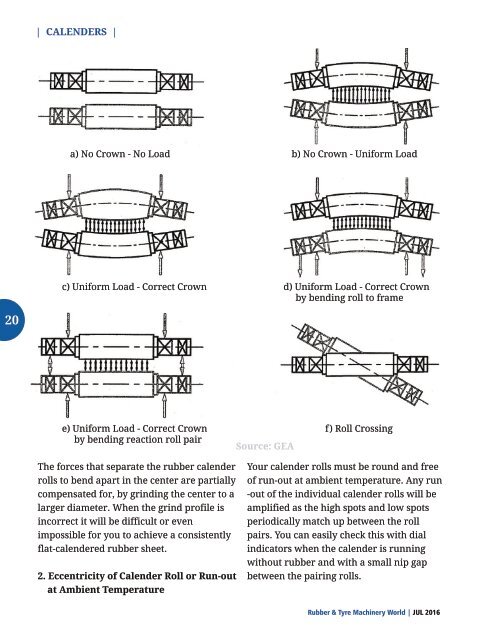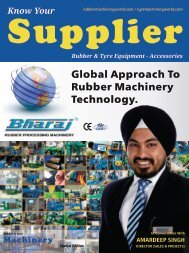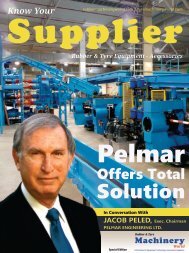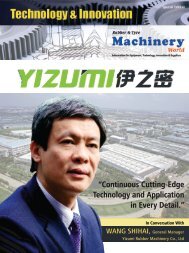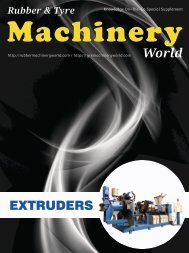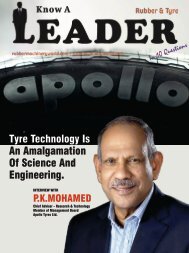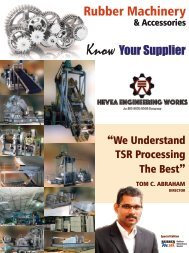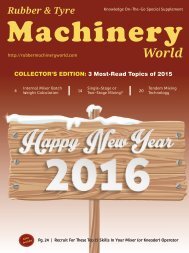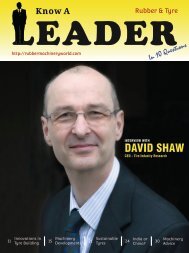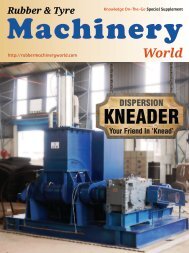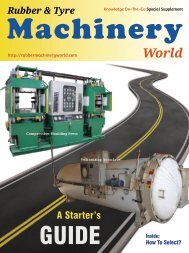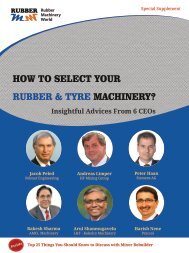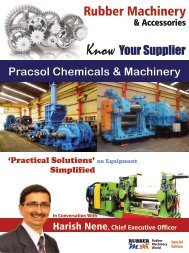The Art of Owning & Operating Rubber Calenders
Choosing the right Rubber Calender is important; learning to operate it smartly is equally key for your success with this machine. This edition covers all these aspects in a descriptive manner.
Choosing the right Rubber Calender is important; learning to operate it smartly is equally key for your success with this machine. This edition covers all these aspects in a descriptive manner.
Create successful ePaper yourself
Turn your PDF publications into a flip-book with our unique Google optimized e-Paper software.
| CALENDERS |<br />
a) No Crown - No Load b) No Crown - Uniform Load<br />
c) Uniform Load - Correct Crown d) Uniform Load - Correct Crown<br />
by bending roll to frame<br />
20<br />
e) Uniform Load - Correct Crown<br />
by bending reaction roll pair<br />
Source: GEA<br />
f) Roll Crossing<br />
<strong>The</strong> forces that separate the rubber calender<br />
rolls to bend apart in the center are partially<br />
compensated for, by grinding the center to a<br />
larger diameter. When the grind pr<strong>of</strong>ile is<br />
incorrect it will be difficult or even<br />
impossible for you to achieve a consistently<br />
flat-calendered rubber sheet.<br />
2. Eccentricity <strong>of</strong> Calender Roll or Run-out<br />
at Ambient Temperature<br />
Your calender rolls must be round and free<br />
<strong>of</strong> run-out at ambient temperature. Any run<br />
-out <strong>of</strong> the individual calender rolls will be<br />
amplified as the high spots and low spots<br />
periodically match up between the roll<br />
pairs. You can easily check this with dial<br />
indicators when the calender is running<br />
without rubber and with a small nip gap<br />
between the pairing rolls.<br />
<strong>Rubber</strong> & Tyre Machinery World | JUL 2016


